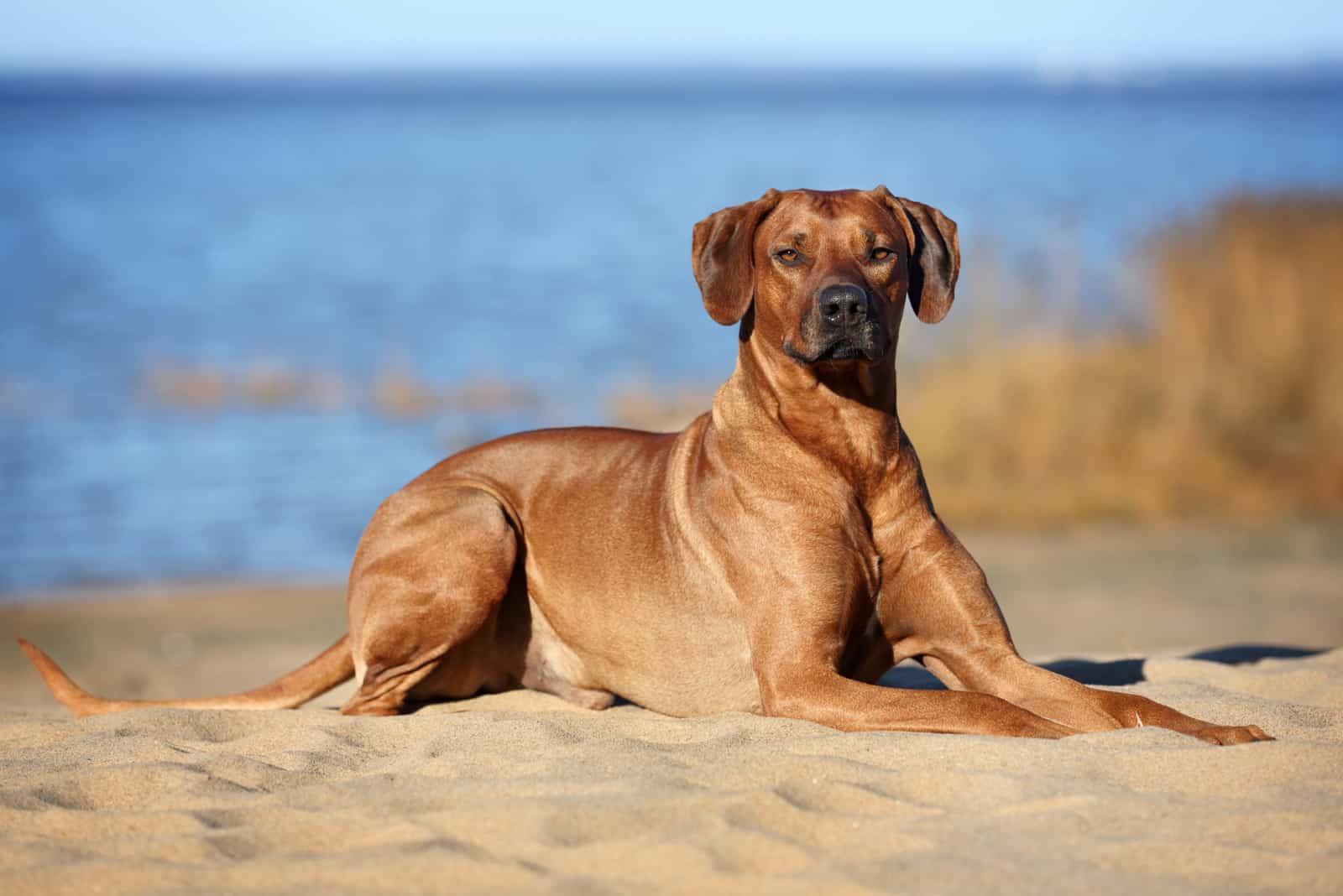This lion-like pup has always had a great impression on me. It seems to me that Rhodesian Ridgeback colors resemble all the shades of the African continent in one animal. But, let’s hear the story of the Rhodesian Ridgeback and his colors.
In the midst of the South African savannahs, once upon a time, were wandering half-wild, half-domesticated mythical mighty fighters that were called Khoikhoi. They were the big game hunters and big-time protectors and guardians of the Khoikhoi people.
The origin of this ferocious dog can be traced back to the Cape Peninsula; the very end of the African continent. Some writings testify that early Dutch colonists saw this creature in his full splendor. These breeders saw the potential to design an even mightier, but less wild and more mild dog breed that was only mild at home, but still ferocious in the African wilderness.
This potential was fulfilled when the Europeans decided to play with genetics a bit and came up with the idea of crossbreeding these wild dogs with a few European purebred dogs. The dogs that were in the game of creating the new Rhodesian Ridgeback breed were also mighty pups.
DNA analysis shows a great impact of the Great Danes, Bloodhounds, Irish Wolfhounds, Greyhounds and some Terriers in the mix – a lot of hounds we are talking about. And, that is how in the midst of South Rhodesia, the first Rhodesian Ridgeback puppies were born.
This Mastiff-size dog got his name after his birthplace and his physical traits. Today, Rhodesia is widely known as a country that changed its name to Zimbabwe, while this region isn’t that prominent.
All in all, this impressive undertaking resulted in the beautiful guard dog and watchdog that we all love. Part of his beauty is due to the fine Rhodesian Ridgeback colors. Let’s see what colors we are talking about.
The Rhodesian Ridgeback Colors And Markings
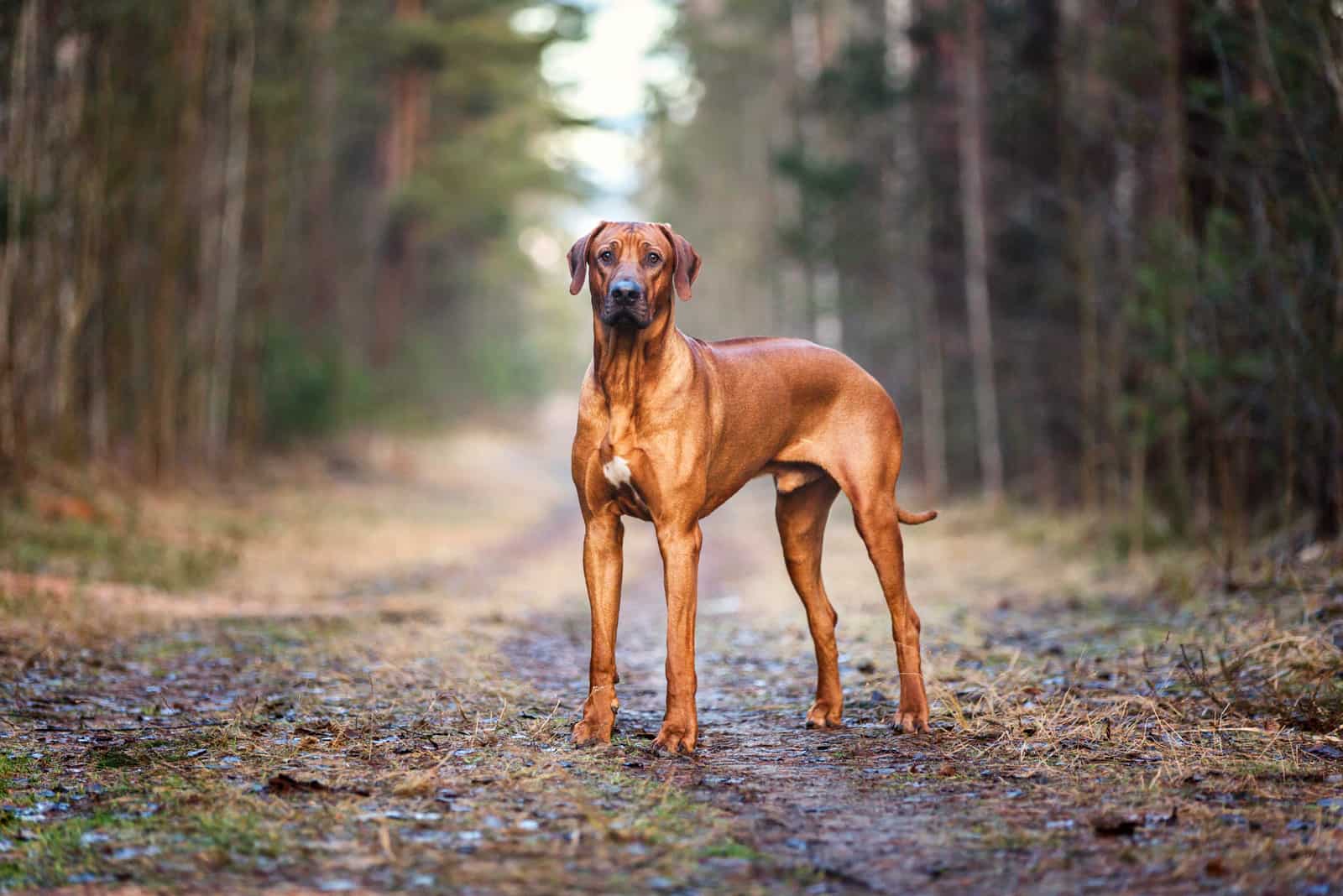
When we talk of coat colors, we must know that they are a matter of genetics, certainly like many other traits in dogs. This is the trait we can influence, but only before the puppies are conceived. And, that is by choosing a mother and a father that are the carriers of certain genes.
That is why it is very important to choose reputable breeders who know what they are doing and why they are doing it, and that they are also responsible and conscientious.
Luckily, there are amazing Rhodesian Ridgeback breeders in the UK; likewise, there are American RR breeder colleagues, but let’s get back to the colors.
There are two types of melanin that are in charge of the colors that puppies, and later, adult dogs will have. You have probably already heard of eumelanin and pheomelanin.
If you have a dog that is dark, blackish, or brownish, then it is probably eumelanin that prevails. If there is a dog that is lighter colored, creamish, yellowish, tan, or reddish, then it is pheomelanin that prevails.
When it comes to the Rhodesian Ridgeback colors, at least what the American Kennel Club (AKC) registers as a breed standard, what prevails is light colors. But, let’s say something more on this topic.
Rhodesian Ridgeback Colors And Markings Chart
The following chart describes colors that are standard and that can be shown in conformation competitions. There are also other variations that are out of the standard, but they do not lack beauty.
To be honest, the only colors this dog appears in is wheaten and the shades of wheaten. That is almost a trademark of this hunting dog.
[table id=482 /]
What Is The Wheaten Color?
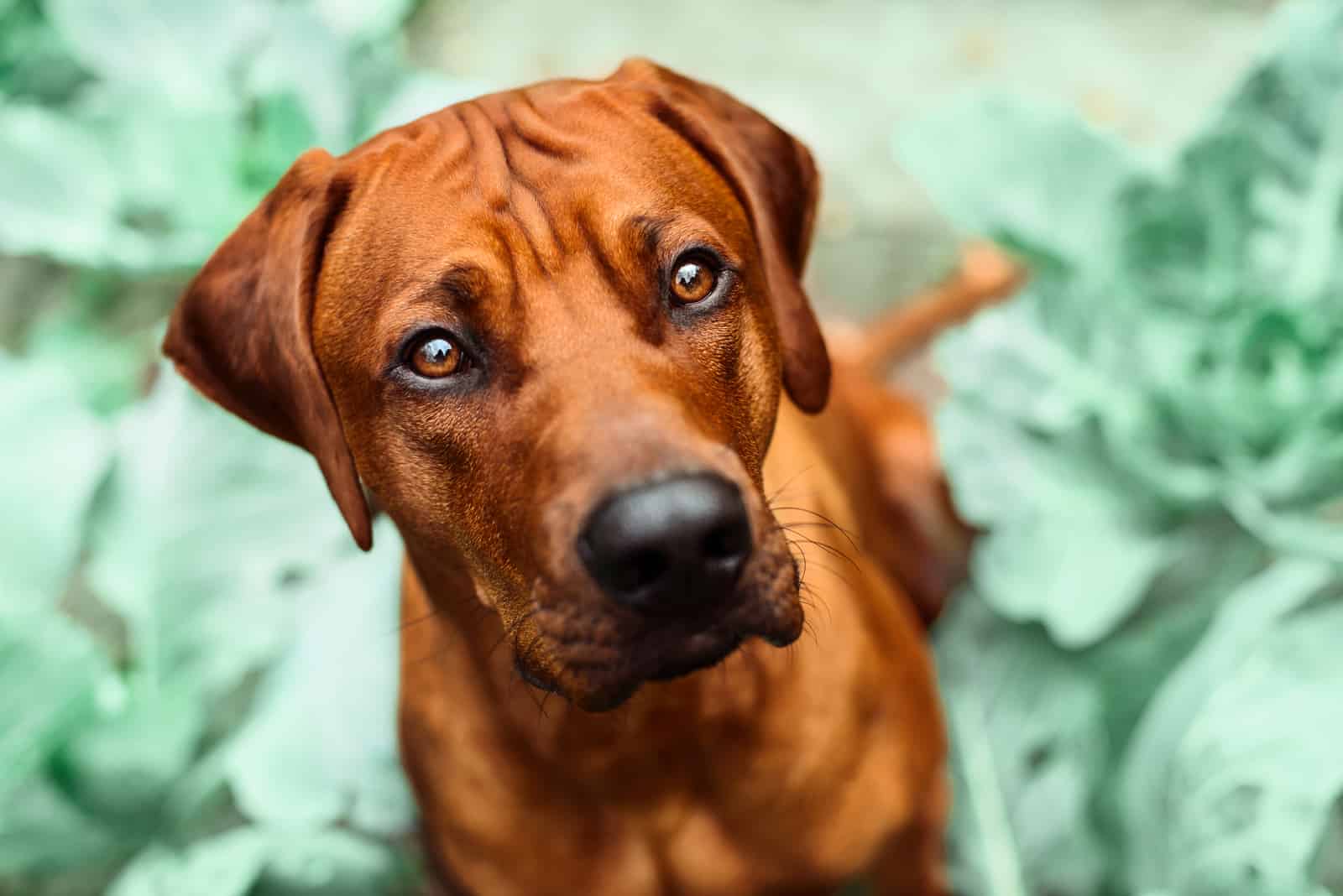
It can be said that wheaten color is the main trait that is indicative that your Rhodesian Ridgeback dog is purebred. If there is some other color that is prevailing in this dog, then probably we are dealing with some kind of Rhodesian Ridgeback mix.
This is also not a bad thing, to be honest. They are lovely – it is just that they are not suitable if you are into conformation dog shows.
Wheaten is derived from the noun that describes grains that have that specific light color. That is wheat – an essential cereal that we make bread of. Therefore, a RR has the color of a wheat field.
A more precise description of the Rhodesian Ridgeback colors is the term agouti. It talks about the coloration that is something like a genetic battle between black and light colors, a more precise agouti protein, and melanocortin.
This specific trait is common for some animals such as wild cats, certain dogs, for example Rhodesian Ridgebacks and Retrievers, wild rabbits, foxes, and rodents.
What About Nose Color?
The nose color of the Rhodesian Ridgeback is something else. It is usually black, and that is okay – it is within a standard. That is the place where black is preferable.
There is another color that can occur on the nose of the Rhodesian Ridgeback, and that is a brown muzzle. It is a color that is rare when compared to black, but it is equally beautiful.
What About Markings?
There are some markings that are allowed. For example, a little bit of white hair on the chest and on the toes is within the standard. This is called the Ujarijo pattern. It usually comes along with a red wheaten color.
On the other hand, having white hair anywhere else is not acceptable. Also black areas are not preferable at all. If any of these prevails over the coat, then it indicates a trait that is below standard.
Some dog owners can laureate with dogs that have black masks. Their face is covered with hair that makes them look like they are wearing a mask.
There are cases where dogs appear to have something that looks like a necklace. It is hair that is shaped in the form of the letter V. This phenomenon is usually accompanied by ears that are a bit darker as well as more dark shades on the head and tail.
Nonstandard Rhodesian Ridgeback Colors
Some people are fond of the unusual Rhodesian Ridgeback colors. Variations are good – just not at conformation shows. So if you want a purebred dog that will thrive on the CACIB, then purchasing a RR that is of any other color than wheaten is unacceptable.
It is interesting that albino Rhodesian Ridgebacks would be disqualified from competition. This phenomenon occurs in other dogs, too (for example, there is an Albino Doberman that is different from a white one). But, nevertheless, we can still enjoy these marvelous creatures in some extravagant editions. Let’s see more nonstandard RR colors.
Black
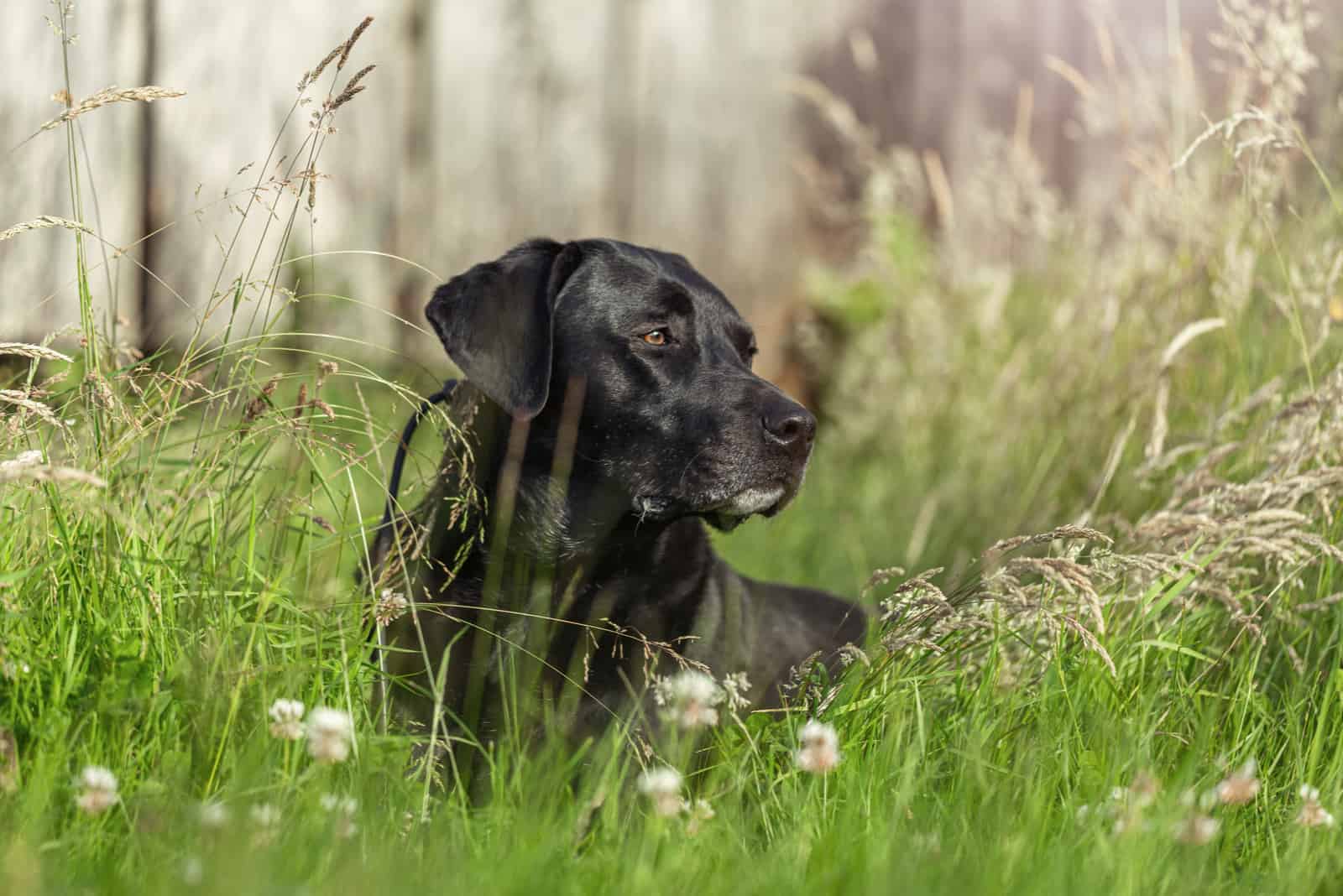
A Black Rhodesian Ridgeback is a very rare sight in the dog world although it is becoming more popular in the USA. All in all, it just seems that the dog is black.
When you get closer, you can see that it is not actually all black. The hairs have light roots that can’t be seen from far away. And, there is excessive black color behind the shoulders and the neck.
Black And Tan
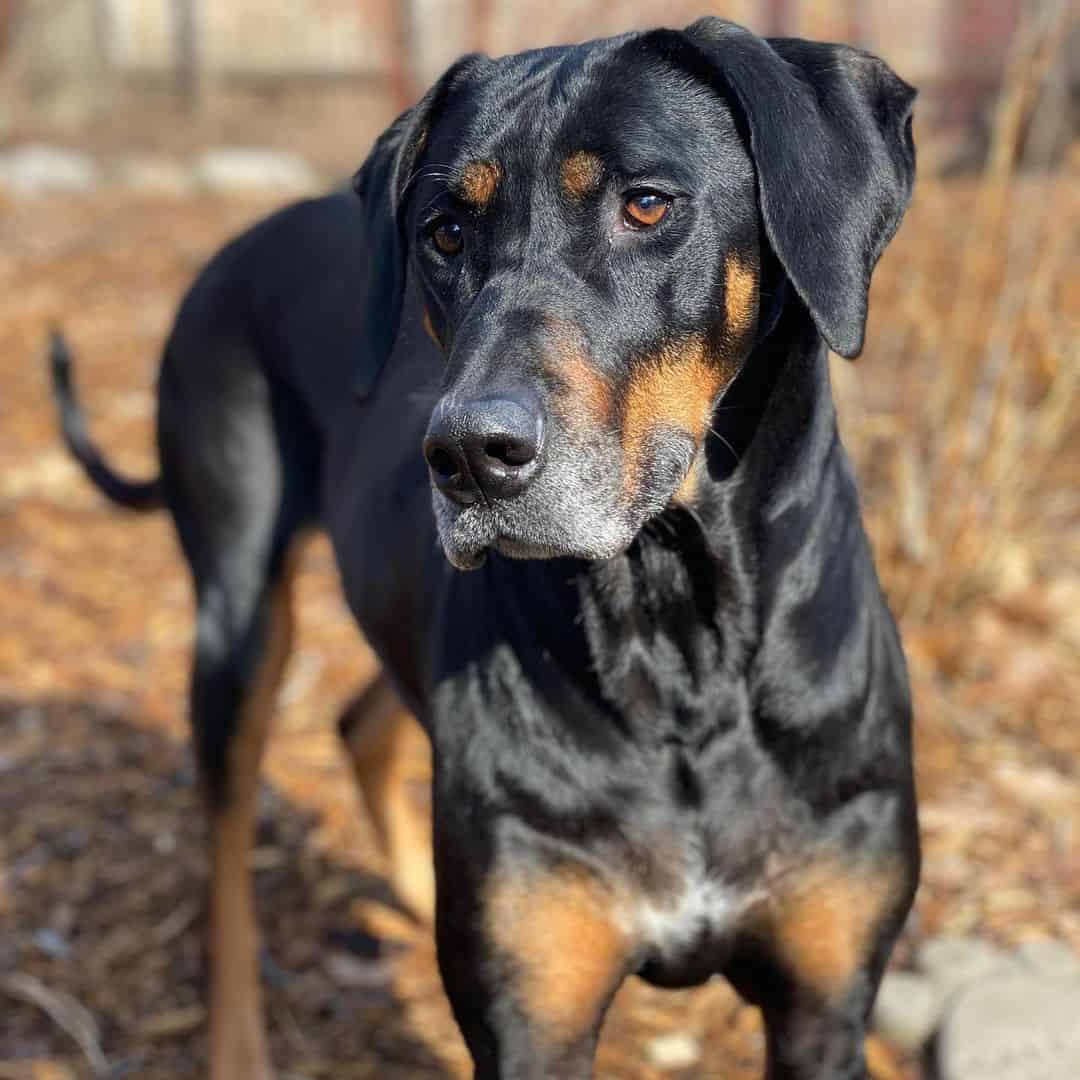
Photo from: @liljohnrhodesians
What is black and tan? You should imagine an all-black puppy that has some lighter parts on its coat. It is like some hairstylist made highlights on his hair.
It is interesting that in order to produce black and tan dogs, both parents must pass on the gene that carries a recessive trait. The chances for that are 25%, and both of the parents have to have that allel on the agouti gene.
Brindle
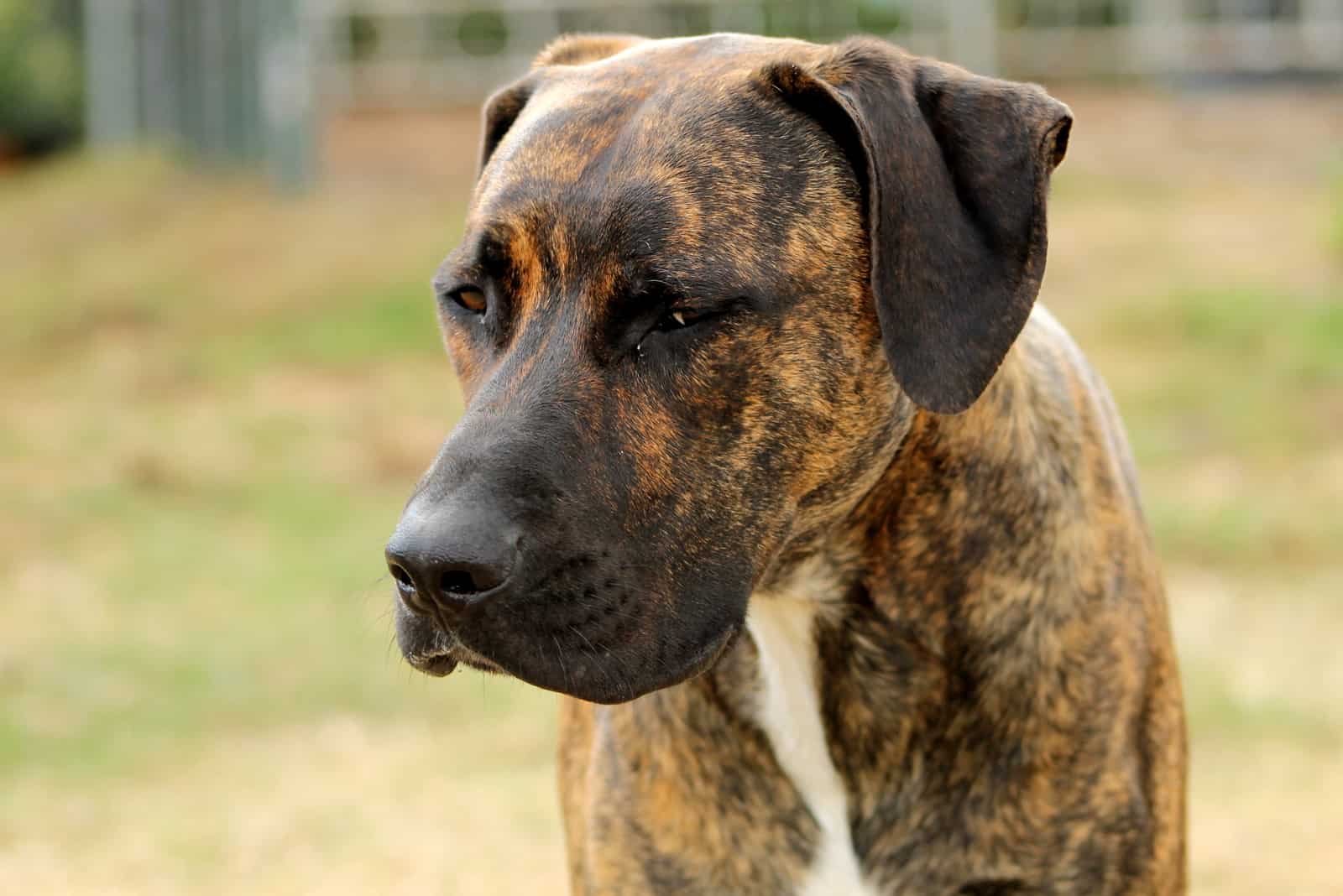
What is brindle color? You have stripes in the combination of fawn and black, for example, then red and black, or isabella and gray. There is no mistake – isabella is a gorgeous color that occurs in some dog breeds. For example, there is an Isabella German Shepherd.
This brindle color can be found in many dog breeds. For example, there are brindle Corgis, brindle Shih Tzus, brindle French Bulldogs, and so on. Since there are brindle variations of Greyhounds and Great Danes, it is no wonder that this color variation can occur in Rhodesian Ridgebacks, too.
There is not enough scientific information on how this color occurs, but it is believed that there is a recessive gene that transfers it.
Silver And Gray
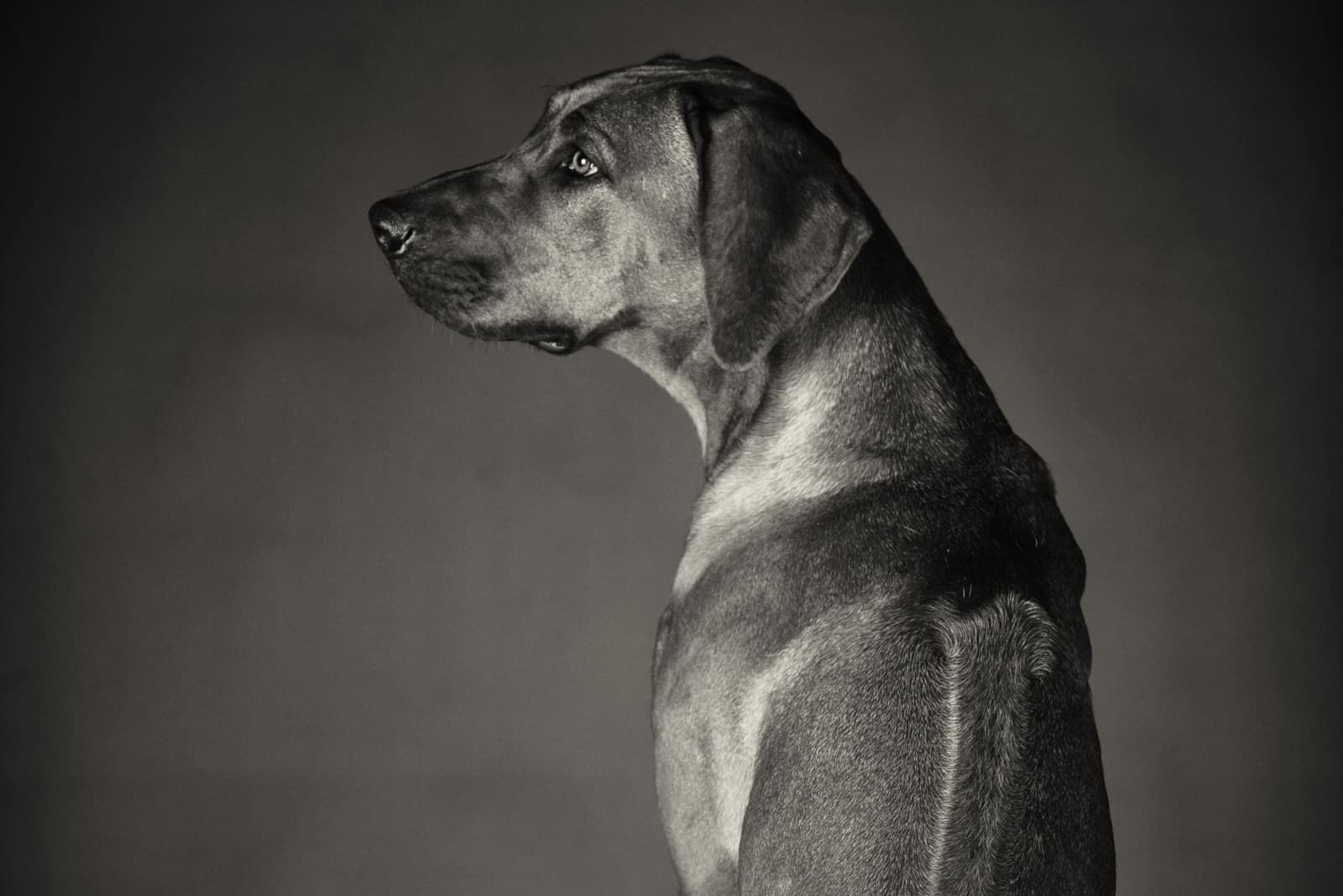
Sometimes, in a litter, there can occur a pup that is almost silver. This combination is easiest to recognize in puppies. During that time, it is more emphasized. Later, when the puppy grows bigger, that gray starts to pale into a color that can be described as the color of a paper bag.
What happens here is that the dog carries a gene for the dilution of the color. And, there is another trait that accompanies this one – the eyes of this dog are light-colored. They are either blue or amber.
This is a phenomenon that has a genetic background, and research has been done to prove it. You can also test your dog to see if he has this gene.
Oh, and one more thing – the nose in this breed is gray, not black or brown, as it is in the standard. Of course, this color phenomenon can happen in a few breeds such as Chihuahuas, Dobermans (see the Doberman colors), Weimaraners (see the Weimaraner colors), and many more of them.
What About The Ridge?
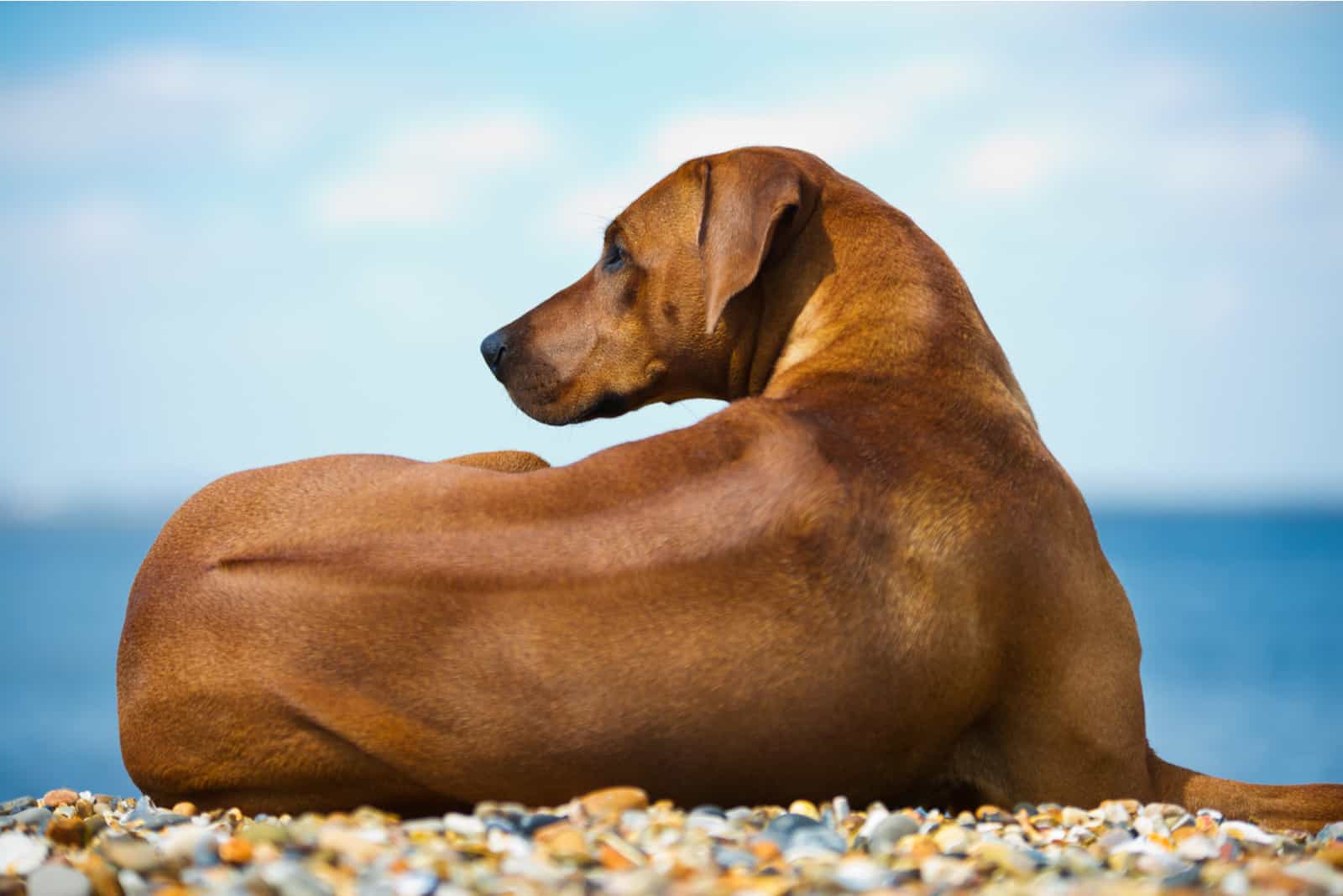
What about it, you may ask? Well, since the ridge on the back is the most distinctive part of the Rhodesian Ridgeback, it is the trait that should be further discussed.
If a Rhodesian Ridgeback doesn’t have its ridge, then the owner is in trouble. Well, that is not some real, life-threatening problem, but it is a problem if you want your pet to be a dog show winner.
Rhodesian Ridgebacks that are born without this hallmark would be disqualified immediately from a competition.
The ridge is a trait that is dominantly inherited when both of the parents are carriers. There is still a 25% possibility that your puppy will not express this trait.
This ridge of hair grows in the opposite direction from the rest of the hair. It is a trait that stands out on this dog. You can see its clear lines and symmetric edges.
This ridge extends from the shoulders to the hips, and there are two crowns that are the same and on the opposite sides from each other. On average, the ridge width is two inches.
Read Also: What Is A Phu Quoc Ridgeback And Is It The Right Fit For You?
Hair Issues
Besides common health issues that occur in many dogs, there are some hair issues that occur in Rhodesian Ridgebacks. We are talking about dermoid sinus, degenerative myelopathy, problems with hypothyroidism, hip dysplasia, and gastric dilatation volvulus.
There is a possibility of hair loss around the eyes in some cases. This happens in humans as well as in dogs. It is called alopecia, and it is a fairly severe condition. Some problems with hair loss can also occur in Rhodesian Ridgebacks.
There are now findings that Rhodesian Ridgebacks can experience hair loss. It is usually not severe, but it can happen.
This hair loss is often not emphasized, but it can progress over time. It usually begins behind the ears, and then spreads down the back.
This usually happens in Rhodesian Ridgebacks with dilute coloring, and this phenomenon either takes on a severe form (rarely), or transforms into some skin condition that is caused by inflammation.
When alopecia happens, it is usually caused by demodicosis and problems with the endocrine system. This is usually referred to as problems with the thyroid gland.
It is interesting that male dogs are at a greater risk of losing hair than females.
To Wrap It Up On Rhodesian Ridgeback Colors
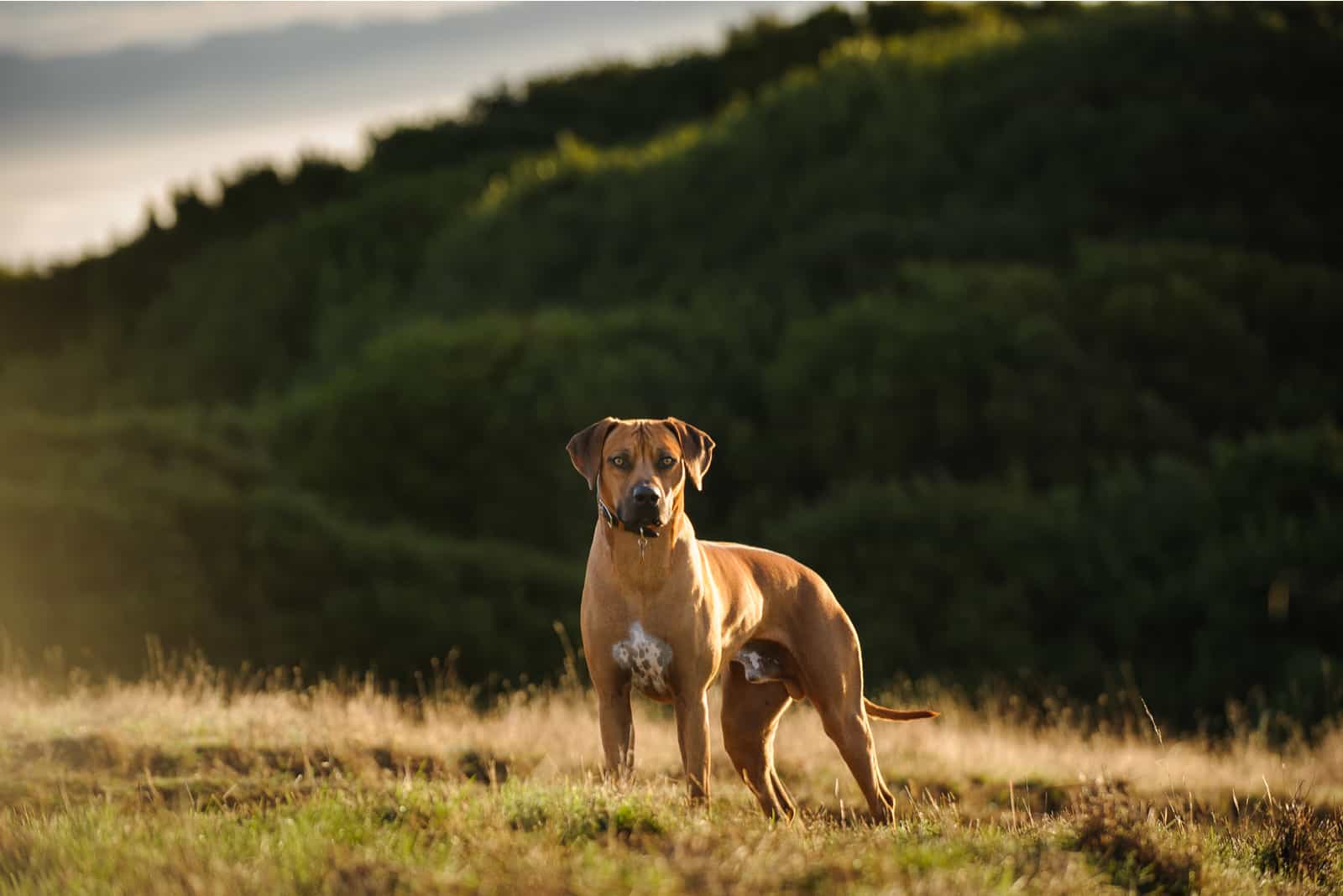
Strong-willed dogs raised by Boer farmers in the African wastelands became one of the most respectable dog breeds out there. With a respectable lifespan and an emphasized prey drive, this dog is, at the same time, beautiful and capable.
When it comes to Rhodesian Ridgeback colors, there is not much differentiation. You can only choose between shades of wheat. Those are colors that are registered as official. When we step outside the conformation box, the choices become a bit bigger.
This dog has won over the hearts of many, and is highly promoted by the Rhodesian Ridgeback Club of the United States (RRCUS). And, if you are among those who are slowly but surely becoming a part of this club, then welcome. Remember, this is a super-fine breed that needs a bit of training and socialization. But, it is worth it!
READ MORE:
Labrador Colors: The Pinwheel Of Colors And Markings
